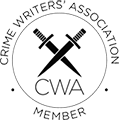How to Dramatize Your Story Through Narrative Structure
Narrative structure is about choices, and about writing your novel, short story or script in scenes.
These choices hinge not only upon the integration of the story and the plot (which are subtly different) and the voice and point of view of your characters, but also upon the sequence of the scenes; in other words, do you start your narrative at the beginning, the middle, or the end? Should you start even after the dénouement?
The choices you make about your characters and your story’s sequence, plus the way you conceive and develop your scenes, is the subject of this course.
A well-organised and cohesive narrative structure need not be chronological nor follow any prescribed template. It is malleable, and so long as it is well integrated, can be unusual… even unique. Understanding narrative structure will give your work cohesion, logical progression and readability, while also conferring artistic form on the structure.
Its effective use can also make the difference between your manuscript being rejected or becoming a best-seller.
Course Elements
- A look at ‘classical’ narrative structure and its use to the emerging writer
- Understanding the type of story you are writing
- Getting in to narrative structure early
- Identifying the differences between story and plot
- Advanced techniques of plotting
- Using the appropriate voice and point of view for your narrative structure
- Thinking in scenes
- Using storyboarding for scenes
- Techniques for rearranging structure for more dramatic effect
- A variety of interactive exercises in structuring a narrative
© John Harman 2011










